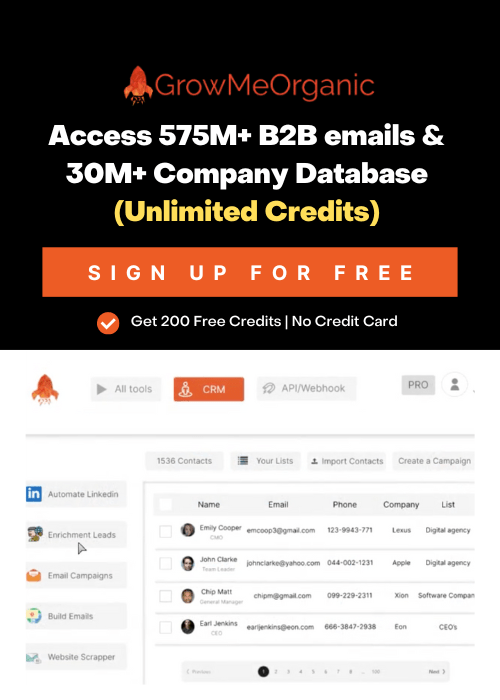A product with five reviews is “270 percent more likely” to be purchased than one without. Customers are more likely to purchase that product if it has reviews. Customers are skeptical about the information that companies share, knowing that companies are aiming to sell them something at the end of the day.
A customer testimonial, however, is an unbiased review or recommendation that has been written by another individual and, therefore, has more credibility. By eliminating some of the customers’ hesitations about making a purchase, they make it easier for them to decide on a purchase.
If you use testimonials correctly in your email marketing, you might just see a rise in conversion rates.
Here are seven ways to integrate testimonials into your email campaigns to establish trust, leverage social proof, and ultimately drive more conversions.
Emails with customer testimonials: 7 tips
Include Short Product Reviews
Testimonials that are punchy are the best. Unlike your email subscribers, who want a quick product review, they do not have time to read. Potential customers will scan long reviews – which means they won’t understand the message your business is trying to convey. Customer reviews should be concise and get right to the point. Check out this example from Streak:
In a short period, the reviews communicate key messages about the brand and product.
Similarly, you could find testimonials that best illustrate your key value propositions; it’s more believable and meaningful to have customers share this information than to make big claims yourself.
Using reviews that mention specific details about your products, as in the above example, is another way you can show your customers exactly what they can expect in terms of benefits and value. Review sources can include your eCommerce site, social media, or credible review sites that are accessible online.
Email can also be used to request reviews. Don’t be scared to pick out one relevant, punchy line from a longer review good testimonial is short, direct, and product-specific.
Engage users in Content Creation
It’s always a good thing to have user-generated content on eCommerce sites. UGC impacts 79 percent of people’s purchase decisions, while content from brands influences only 13 percent.
Customers’ testimonials can and should be combined with social media posts, images, and videos to enhance the impact of customer testimonials, although they are considered user-generated content.
These reviews are not just more credible and authentic. Using UGC increases engagement since customers are encouraged to get involved in your campaign and your brand becomes more relatable since customers can see what others like them are doing with your product.
One effective way to leverage UGC is by implementing an social media wall for your online store. This can be showcased prominently on your website to display real-time posts from satisfied customers using your products. In the footer of this email, Harry highlights social media posts about their razors.
There’s an incredible level of authenticity here — these are real people using real slang and making witty comments.
Furthermore, this example shows how testimonials and user-generated content are ideal for referral campaigns. The recipient is engaged, so they want to participate and convince their friends to do the same.
Moreover, you can use rephrasing tips to add originality and uniqueness to published content without changing its meaning. If your product allows you to share images of yourself using it, you can create a campaign to encourage users to do so. Set up a hashtag that users can use on Instagram to share their images.
Using customer images and testimonials together is the key takeaway here. As a result, your emails will appear more authentic and appealing.
Submit Video Testimonials
These days, email marketing is often accompanied by a video. It’s good to know that 68 percent of people prefer to learn about new products or services by watching a video.
With video included in your emails, you know you are going to make your subscribers happy. Video testimonials from real customers can add a human touch to your promotional videos instead of creating them all the time.
As a result, the video testimonial should emphasize the benefits and results that people obtain from the services. Videos show enthusiastic people promoting a product. It is possible to use videos you create and own, such as Trunk Club, or you can use YouTube. People love product unboxing and review videos on the platform.
With their permission, you may be able to share review videos uploaded by other users. Alternatively, collaborate with influencers and have them make a video reviewing your product honestly. Whatever the case, video can be a great way to show off your product to third parties.
Provide complete customer stories and case studies
Case studies and success stories from customers are convincing. You can not only evoke emotions with them but also demonstrate tangible results. In other words, it isn’t just about the idea or presenting the goal of the product… It is about bringing dreams to life.
A customer success story will inspire them to take action, so ask your loyal customers for their success stories when they are about to make a purchase.
Adding data as well as images to your stories will enhance their impact. However, it’s not always easy to get customers to share their stories. Make it as easy as possible for them to participate.
Make a list of simple questions that they should answer and later form them into a story. You can also offer them an incentive for participating. Of course, you can’t pay for reviews and expect them to be honest.
Instead of a discount, offer a chance to enter a contest. After collecting stories, select the most evocative ones to include in your marketing campaign.
Meet your goals with testimonials
You need to make your testimonials work for you beyond just collecting positive reviews in every email you send. You need to make them work for you rather than just collecting positive feedback.
If you strike at the right moment with the right testimonial, then your customers are more likely to purchase. Everyone knows that your company sends a lot of different types of emails, from welcome emails to newsletters to follow-up emails, and so on.
For example, you can share videos or user-generated content when you have new products to encourage more conversions. Or you can send an email with a product-specific review to minimize dissonance following a purchase, i.e. show the customer that their decision is correct.
.
Overall, you must select testimonials that match your purpose and use them at the right time.
Use testimonials to Personalize
You’re missing a trick if you don’t incorporate personalization into your email strategy. According to 98 percent of marketers, personalization is important for building customer relationships. Email is the most personalized marketing channel with 78 percent of marketers using it.
To use testimonials effectively, you should highlight customers who are in the same demographic as your recipients.
Customers are allowed to share their stories by writing short reviews and adding images of them wearing their products. They want to target a busy, young fashionista who’s a mom and an entrepreneur.
Identify the demographics, pain points, and desires of your audience by creating buyer personas. You might consider segmenting subscribers into groups if you want to make your emails even more personal. When you provide a variety of products aimed at different types of users, this is particularly effective.
They can be separated by demographics, location, interests, purchase history, and behaviours. Include testimonials that are relevant to each group in emails.
Clients are more likely to engage with recommendations from people like them.
Add other forms of social proof
In addition to reviews, demonstrate social proof in other ways. Customers who see social proof are more likely to conform and get involved. Social proof strengthens your brand’s credibility. It gives your customers confidence when it comes to making decisions.
For example, mention the number of products you have sold and the number of countries you have served. Trust icons and celebrity endorsements are also effective ways of proving your credibility. List the logos of the websites that have reviewed and featured your product.
Social proof shouldn’t overwhelm subscribers, but if you can provide extra social proof in an email, as well as testimonials, your offer becomes much more credible.
About Post Author
Anant Gupta
Growth Hacker, Marketing Automation Enthusiast & Founder of GrowMeOrganic











